This was published 8 years ago
Bordeaux river cruise and wine tour: Raise a glass to France
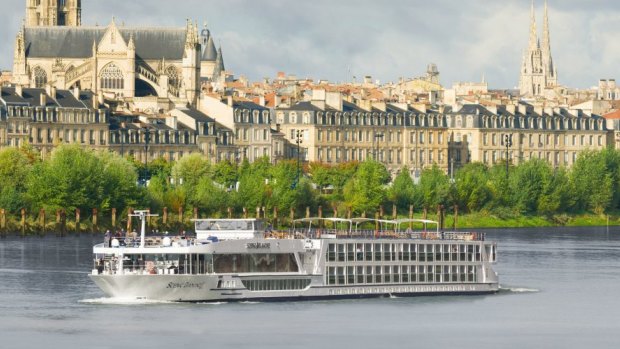
Scenic Diamond Cruise, Bordeaux.
"Wine is the most healthful and most hygienic of beverages," says a poster on a wall in Bages, quoting the 19th-century scientist Louis Pasteur. And who wants to argue with that?
At this village in France's renowned wine-making region of Pauillac, where we stop briefly on a bike ride through the Medoc vineyards a couple days into our Bordeaux river cruise, it is September and about three weeks away from the much-anticipated grape harvest (vendange).
It is also around the time of the 30th annual Medoc Marathon – an annual event that sees runners racing (or stumbling) along a 42-kilometre course through some of the world's most prestigious vineyards: Chateau Lafite Rothschild, Chateau Mouton Rothschild and Chateau Lynch-Bages, among many others. Participants don fancy dress, slurp glasses of vintage wines on the run and refuel with rich local cheeses, oysters and foie-gras. Health, fun and wine – Monsieur Pasteur would have approved.
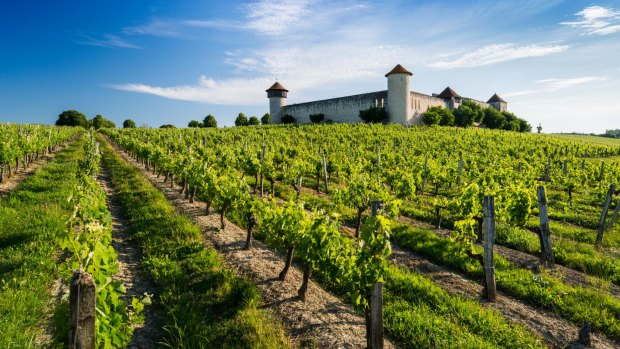
Vineyard in Bordeaux.
Our cycling tour is a less rigorous exercise, but it does include wine-sampling at Chateau Lagrange, the biggest estate in the Medoc.
The chateau itself is unbelievably picturesque – an impressive 17th-century building set on a peaceful lake. As well as making highly rated red wines from its cabernet sauvignon and merlot grapes, Chateau Lagrange produces limited quantities of a fresh, delicate white wine called Les Arums de Lagrange.
Chateau Lagrange is just one of the many highlights of Scenic's nine-day river cruise, which starts and finishes at the beautiful city of Bordeaux on the Gironde estuary. The spacious, comfortable 167-passenger Scenic Diamond zig-zags back and forth over the Garonne and Dordogne rivers, stopping at Pauillac, Bourg and Libourne for a choice of tours to medieval towns and villages, wine-tastings at spectacular chateaus, and visits to regional food producers.
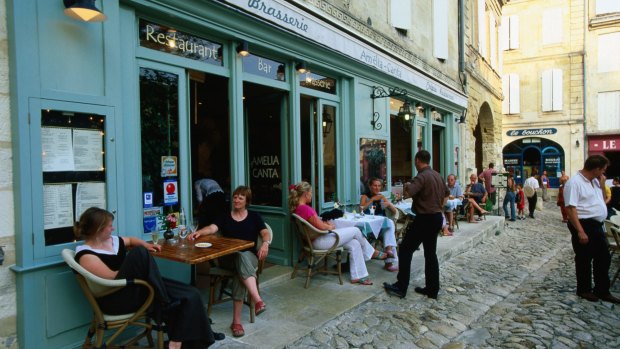
Saint Emilion, an outdoor cafe in the heart of wine country.
A scheduled stop at the historic port of Cadillac is cancelled due to low water levels – one of the hazards of cruising these rivers, along with big tides – but the itinerary is reworked and we take a short bus ride there instead. Cadillac, on the right bank of the Garonne, is one of several hundred bastides, or fortified towns, that were built in southern France in the Middle Ages.
The town's elegant Chateau de Cadillac dates to the 16th century and has a chequered past – originally a lavish royal residence, it was used as a women's prison in the 19th century and then a remand centre until the 1950s. Tours reveal grisly reminders of its prison incarnation, along with grand tapestries and intricately painted ceilings harking back to its ducal days.
St Emilion is both a medieval village – set in the Dordogne Valley – and a celebrated wine region. The village's steep, narrow cobbled lanes (tertres) lead to such treasures as the subterranean Monolith Church (hewn out of limestone and topped by a 53-metre-high tower); the Catacombs (very pleasant on a hot day); and dozens of attractive wine merchants' shops.
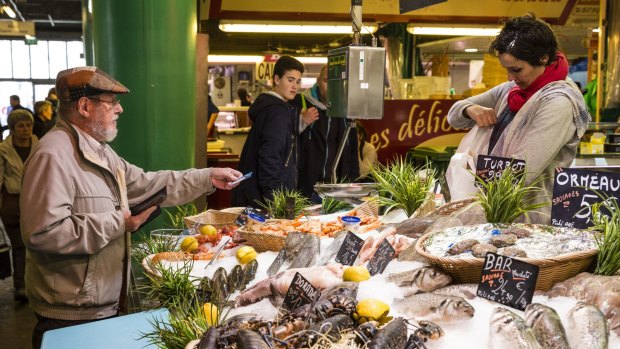
Marche du Capucins, Bordeaux.
There is more history to absorb, photograph and ooh and aah over in the fortified town of Cognac, followed by a tour to see how brandy is produced at the nearby Remy Martin estate. The property is so vast – more than 40 hectares of vineyards and cellars – that visitors are taken around on a little train.
Experts from the estate outline the complex process involved in making one of the world's favourite brandies, from growing the grapes to distilling, blending, ageing, storing and bottling it. Who knew that high-profile rappers, who are partial to $4000 bejewelled bottles of the Louis XIII blend, drove the recent resurgence of the spirit's sales in the US?
Cycling tours on fabulous electrically assisted E-bikes prove popular. The longest is the 30-kilometre ride from Bourg to Blaye and back, through glorious countryside dotted with villages of stone houses, ancient churches and yet more magnificent chateaux.
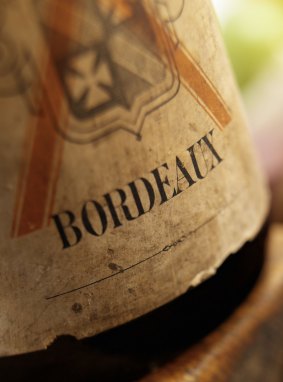
Learn how to decipher French wine labels.
Blaye, set on a strategic point overlooking the Dordogne and Garonne, is dominated by its imposing citadel. We ride our bikes through large gates built in the 17th century, just as a red horse-drawn carriage clatters past, bearing the arms of the Chateau Marquis de Vauban. Its passengers, a bunch of merry men wearing berets, wave and shout "Bonjour!" – perhaps they are local winemakers on a celebratory jolly.
From Bourg, we cruise to the attractive bastide of Libourne. A tour of a duck farm in Bergerac is on offer but foie gras is not one of my favourite things, so I spend the morning wandering around the shops in Rue Gambetta and checking out the drool-worthy indoor produce market. Libourne also holds a huge open-air market in the town square and surrounding streets every Tuesday, Friday and Sunday.
Local oysters are the focal point of a day trip to Archachon. The seaside town, which is about an hour by bus from Bordeaux, attracts thousands of summer visitors – as much for its sand dunes, restaurants, beaches and bird sanctuary as for the oyster huts at Gujan-Mestras. An educational oyster-tasting session is followed by lunch at busy beachfront restaurant, Cafe de la Plage.
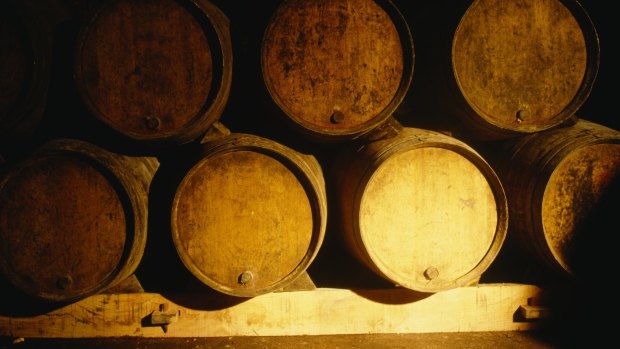
The cruise includes wine-tastings at spectacular chateaus.Credit: Getty Images
We spend three days in in Bordeaux, one at the beginning and two at the end, in the "Port of the Moon", which has been around since pre-Roman times and has been a major wine-trading centre for hundreds of years. Today it vies with Paris as one of France's best-loved cities, since its impressive 18th-century waterfront buildings, boulevards and UNESCO World Heritage-listed medieval centre were rejuvenated in the 1990s.
Scenic Diamond is moored in the heart of the action, a short stroll from Place de la Bourse and between the 19th-century stone bridge, Pont de Pierre, and the striking modern lift-bridge. The ship's organised walking and cycling tours offer an ideal introduction to Bordeaux's essential sites and with a map or Scenic's GPS-enabled Tailormade guides, it's easy to explore further on your own.
Keen shoppers should head for the Golden Triangle, particularly Rue Sainte-Catherine, the longest shopping street in Europe; numerous parks offer the perfect spot for a pique-nique; and true wine aficionados can take a two-hour workshop at the Bordeaux Wine School. However, considering what you can learn and taste at the vineyards visited on the cruise, maybe that's not so necessary.
TRIP NOTES
MORE INFORMATION
scenic.com.au, bordeaux-tourism.co.uk
GETTING THERE
Scenic Diamond's 12-day Bordeaux itinerary starts with a night in Paris and a TGV train transfer to Bordeaux, followed by a 11-day cruise that finishes in Bordeaux. Fares start at $7295 per person for the April 29 departure and the season runs until October.
STAYING THERE
The "Breathtaking Bordeaux" cruise visits Cadillac, Libourne (for St Emilion), Blaye (for Cognac), Pauillac and Bordeaux.
DINING THERE
Scenic Diamond's main Crystal Dining restaurant serves buffet breakfast and lunch, and a la carte dinner, with wines included. L'Amour is a more intimate restaurant that serves five-course dinners and Table La Rive is an invitation-only venue for Diamond deck passengers. River Cafe is open all day for light meals and snacks.
SEE + DO
Bordeaux is hosting its 10th biennial wine festival from June 23 to 26. Stands from French and 10 of the world's major winemakers will line two kilometres of the riverfront, the Bordeaux Wine School will offer free workshops and there will be fireworks, art exhibitions and concerts. See bordeaux-wine-festival.com.
Sally Macmillan travelled as a guest of Scenic Tours and Etihad.
FIVE MORE BORDEAUX EXPERIENCES
LOOK
Modern art-lovers should head for the CAPC Musee D'Art Contemporain. Set in a former warehouse at 7, rue Ferrère, it hosts a permanent collection and regular new exhibitions. Closed Mondays.
CLIMB
You need to be fit to climb the 230-odd steps to the top of Tour Pey-Berland, next to Cathedrale St-Andre. However, city views from the 50-metre Gothic belfry are worth the effort.
SHOP
The city's biggest market, Marche des Capucins, is open seven days a week. Stock up on fresh regional goodies at "the belly of Bordeaux" and indulge in a gourmet picnic.
BROWSE
Le Passage St Michel at 14 Place Canteloup is home to numerous antique-dealers and second-hand shops – however, you're more likely to find a bargain at the Sunday morning St-Michel flea market at Place Duburg.
DINE
Gordon Ramsay's upmarket restaurant Le Pressoir d'Argent opened in the Grand Hotel de Bordeaux last September. The Kitchen Nightmare hit the headlines when he announced he would be serving some English wines – quelle horreur!
WINE WORDS FOR BEGINNERS
If you're a keen amateur wine enthusiast but know next to nothing about the subject other than enjoying drinking it, here are a few handy terms.
AOC (Appellation d'Origine Controlee): The geographical origin, quality and (generally) the style of a wine.
AOP (Appellation d'Origine Protegee): Highest tier of French wine.
Balthazar: A large bottle containing 12 litres, the equivalent of 16 regular wine bottles.
Chateau or Domaine: Wine estate.
Cru: Means growth in French. And then it gets complicated. When applied to wine it means different things in different regions; generally, however, it refers to a vineyard or group of vineyards with the same terroir (see below). In the simplest terms, it indicates that the vineyard or estate has met specific qualifications to use that term.
Cru Artisan: Bordeaux estate classification below that of Cru Bourgeois.
Cru Bourgeois: A classification of Bordeaux wine estates in the Medoc that were not part of the original 1855 Bordeaux classification.
Cru Classe: An officially classified vineyard.
Grand Cru: "Great growth" or vineyard.
Grand Vin: In Bordeaux it denotes a chateau's premier wine, or "first wine".
Terroir: How a particular region's climate, soils and aspect (terrain) affect the taste of wine.
Vignoble: Vineyard
Vin: Wine.
Sign up for the Traveller Deals newsletter
Get exclusive travel deals delivered straight to your inbox. Sign up now.